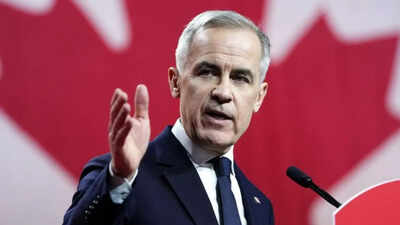Canada's Prime Minister Mark Carney Unveils Liberal Party's Election Platform for Upcoming Federal Election

On Saturday, Canada's Prime Minister Mark Carney, who also serves as the leader of the Liberal Party, officially introduced the party's election platform as the country gears up for the federal election scheduled for April 28. Carney, who recently took over the leadership from Justin Trudeau in March, emphasized the necessity of a well-structured plan in times of crisis, stating on social media platform X, "In a crisis, you need a plan. Here's mine." This statement reflected a commitment to address the significant challenges facing the nation.
The Liberal Party has been in power since 2015 and is currently in a competitive race against various political rivals, each of whom has made substantial announcements regarding spending and tax cuts throughout the campaign period. Notably, Carney and the leaders of other political parties entered the leaders debates without presenting their platforms, which are crucial for elucidating how their ambitious promises will be financed.
The release of the Liberals election platform comes just one day after early voting commenced for the federal election, which will continue until the following Monday. This timing demonstrates the urgency and importance the party places on engaging voters as they outline their priorities.
According to a report from The Globe and Mail, the Liberal election platform outlines plans for nearly $130 billion in new spending over the next four years. Among the top priorities highlighted in the platform are defense, housing, and various tax cuts. Additionally, the document mentions an allocation of $28 billion for unspecified sources, indicating a level of uncertainty in some areas of financial planning.
While the platform projects a decline in the deficit-to-GDP ratio to 1.36 percent by the fiscal year 2028-29, it notably omits adjustments for potential trade impacts. However, it does factor in an anticipated $20 billion in revenue for the current fiscal year from counter-tariffs imposed by Canada on the United States. The Liberal Party has stated that this revenue will be directed towards supporting workers and businesses adversely affected by these tariffs.
The spending breakdown within the platform distinguishes between operating and capital expenditures. For the current fiscal year alone, a $9.2 billion deficit is projected in operating spending, although this is expected to transition into a small surplus by the fiscal year 2028-29.
Among the new commitments highlighted in the platform is a proposal to establish an in vitro fertilization (IVF) scheme that would provide up to $20,000 for a single standard cycle of IVF treatment. This initiative aims to address the growing needs of families seeking reproductive assistance. Furthermore, the platform includes a pledge to reach a target of allocating 2 percent of GDP for defense spending by the fiscal year 2029-30, underscoring the party's focus on national security.

























